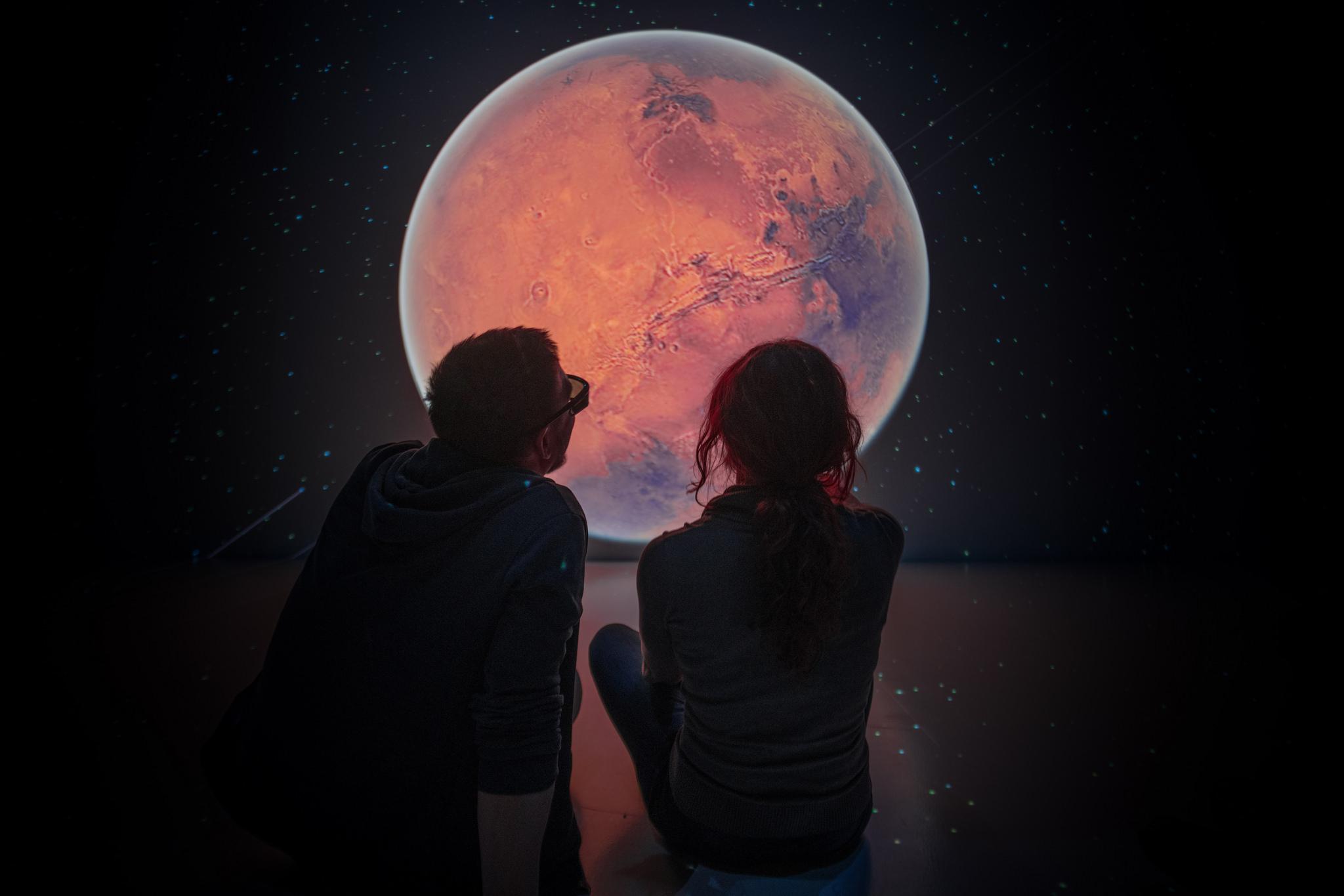Can we learn about ourselves by studying outer space? The further we go, the more we get confronted with the unknown of ourselves. In ongoing research Waag is exploring human outer space activities. In the coming months societal relevant scenarios for outer space human activities are investigated. Specifically the potential of life on other planets is explored from a social, ecological and ethical perspective, and not just the technological.
Until recently, the human activity in space was aimed at exploring the deepest realms of the Universe and observing rare observables. With a development of planetary sciences attention shifted to materiality found in our and other solar systems. Specific focus goes to the bio-signatures, chemical fossils that provide scientific evidence of past or present life. With advanced radar technologies and observational instruments we can now study deep history of those planets and their moons.
ESLAB symposium on extreme habitable worlds
As presented at 51st ESLAB symposium on Extreme habitable worlds in December 2017 at ESA/ESTEC in Noordwijk, space sciences established extensive methodological and technological observation of almost every inch of nearby planets and atmospheres of exoplanets in other solar systems. ESA presented highlights of current and coming space missions that can identify almost individual molecules from specific early time of planet formation. Some interesting findings that were presented at this symposium are the following.
As presented by Frances Westall (CNRS, Orléans), undersea volcanoes, pumice rafts, volcanic-hosted splash pools and continental rivers, are proposed to be signs of emerging life. Finding them on other planets, would represent possibility of finding life there.
Observing Earth from the outside provides necessary comparative information on what to look for at observing other planets, even those in other solar systems. Spectral analysis of common gasses can help us identify if planet is habitable or not. Same studies also provide frameworks to understand what habitability is at all.
Beside scientific topics the symposium also revealed, that behind all these scientific and technological achievements stand numerous individuals, communities and institutions, that are real Moon village in becoming. Developers of lunar activities like Bernard Foing (ESA, Noordwijk) are aware, that living on other planets is not just technological endeavour, but mostly societal.
Learning from extreme habitability
Extreme environments seem only extreme from a human perspective. From biological observation they reflect the deep complexity of time and space on bio diversity. Alien life, if it exists or not, represents ecological multiplicity. We as humans cannot understand and manage all of them. What we can do is learn from them, which can give us a better understanding of our own living environment. This can make us define environmental ethics that could actually protect quality of life within ever changing living environments. Further research offers an opportunity to present these perspectives beyond simplified visual representation.
Today’s human actives on nearby planets move from observation to habitation, new questions are emerging, not just technological, but also those related to development of ethics. Scientific observation has very clear ethical foundation, but how can we approach ethics of non-terrestrial habitability of an individual, society, technology, economy, humanity, non-human living and ecology out of our cradle? Who or what is allowed to inhabit Moon, Mars and asteroids? Rovers, miners, tourists, explorers but what about microbes and viruses, the non-human. With our research we approach an understanding of a capacity to establish life out of the Earth. We argue, that technology (including biotechnology) doesn’t have enough world making capacity and that ecological thinking and making would be required.
This blog is part of an ongoing research on human outer space activities. In this research different domains are brought together to discuss space scenarios, that differ from existing technology centred activities and policies. The aim is to propose societal relevant scenarios for outer space human activities.
